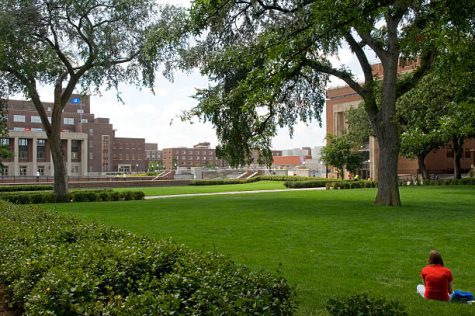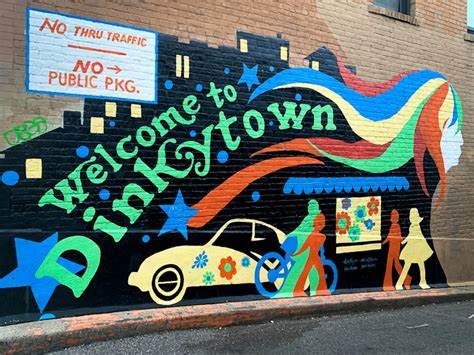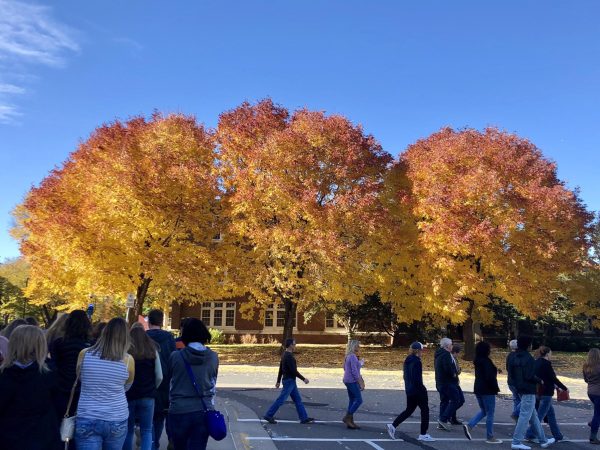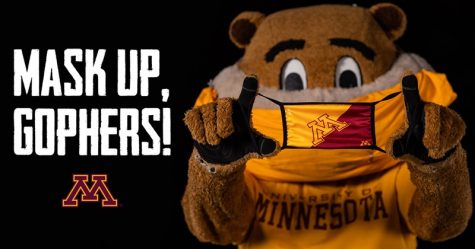New U of M Study Finds Breakthrough in Fighting COVID
Semi Transparent Viruses
April 7, 2022
A recent study done by the University of Minnesota (U of M) found that college classrooms are actually the most likely and dangerous places to catch COVID-19. The study stated that the overwhelming majority of virus transmission happens during lectures, and not in crowded, public areas.
One researcher said, “It turns out that classrooms were the real danger the whole time. Those places are like mini Wuhans.”
With this new information brought to light in the past few weeks, the school acted actively and quickly, as usual, to update the now-outdated mask policy on campus. Multiple mass emails were sent out to students and faculty outlining the updated policy.
One read, “As we evolve to the changing public health landscape, we are pleased to make the following updates to the Face Mask Protocol.”
The remainder of the email described these revolutionary changes. Masks are now only required in classrooms and public transportation. Places where masks are not required include study areas, dining halls, entertainment venues, libraries, recreation facilities, and hallways.

In actuality, the conclusion is logical, and difficult to see before further studies. We should’ve known that classrooms and buses are the only high risk areas because of how low the numbers were when school was completely online. When there was in limited interaction in classrooms, and there were nearly zero total cases, but times like this cause us to think and act differently.
Soon after the results were published, more details emerged as to how the study was conducted. It turns out that the study was actually conducted by the Academic Advisors at the U of M, not a group of seasoned researchers. This makes sense and could also explain why public universities near the Twin Cities weren’t following these same guidelines. Iowa State, which previously had the most covid cases out of any school in the country, is still completely maskless despite this new data. The same goes for the University of Wisconsin-Madison. It’s quite likely that the advisors in charge of spreading this newly discovered information simply forgot to send the email informing other schools. This is typical of advisors, but we cannot blame them because they were probably busy being absolutely no help at all to students at the University of Minnesota.
When we received word of this study we took to the streets of campus to get some words from everyday students and what they thought of the new policy change. We asked questions about what they thought about it, and if they felt safer now.
One student remarked, “Honestly, it makes a lot of sense. There was one time when I was at the rec center working out. It was super busy and I had just finished an intense workout without my mask on. I was walking to my class through the hallways and as soon as I stepped foot into the classroom, I could literally feel the covid entering my respiratory system. I quickly put on my mask because I now know that the extremely low breathing and heart rate environment of lectures are actually the most high risk situations.”
That student later told us that they were a grad student working on a research project about infectious diseases and that they wished to remain anonymous.
We also reached out to the advisors who conducted the study, but they must’ve mistaken us as students because they still have yet to respond.
In the end, the news is good. The University of Minnesota is mostly mask free. Students can go to dining halls with friends after a workout and not need a mask regardless of how crowded those places are because COVID-19 is limited to classrooms now. They can walk to class in hallways without worrying about COVID. Students probably don’t even need to bring a mask with them on campus, unless they plan on stepping from the hallway into a classroom, then they will.

















